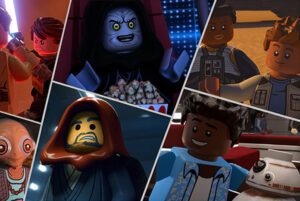Ikumi Nakamura, the creative director of Ghostwire Tokyo who became a fan favorite personality during E3 for her bubbly demeanor, has officially departed studio Tango Gameworks and publisher Bethesda/Zenimax.
In a tweet posted Wednesday, Nakamura announced her decision to leave the studio.
“After [nine] years as creative director & art director at Tango and Zenimax – I felt here is one of ends of the journeys,” Nakamura wrote. “I learned from the talented people I’ve worked with and I respect. Contact me if anyone wants to work with me!”

Nakamura included a link to, of all things, her LinkedIn account in her departure announcement.
In a statement to IGN, Bethesda confirmed Nakamura’s departure.
“We can confirm that Nakamura-san has decided to leave Tango and we wish her the best of luck in whatever is next for her,” Bethesda said. “Tango continues to be led by the legendary Shinji Mikami and his talented team in the development of Ghostwire: Tokyo. We look forward to sharing more on what they’re creating in the coming months.”
Bethesda did not comment on the status of Ghostwire Tokyo’s development.
Ghostwire Tokyo is the next game from Tango Gameworks, the studio that brought us the survival horror franchise The Evil Within, directed by Shinji Mikami, who’s also known as the director of the original Resident Evil game.
In addition to her role as creative director on Ghostwire Tokyo, Nakamura also worked as a concept artist on Bayonetta and an environment artist on Okami.

Despite Ghostwire Tokyo ostensibly being a similarly horror-oriented game like The Evil Within, Nakamura quickly became a social media star for her cheery demeanor at E3 while announcing the game. She cracked jokes, admitted to stage-fright, and struck fun poses. By the end of E3, she had accrued more Twitter followers than any of her bosses, according to Kotaku. In the months since E3, a swell of fanart of Nakamura can be found on Twitter and elsewhere.
A quote she gave for The Evil Within art book illustrates her approach to designing horror games.
“Reality and horror are inseparable,” she wrote. “If you overdesign, you force the player, and without any design the experience becomes less memorable. Just having blood splatters and heads chopped off is not enough. This is only scary for its grotesqueness and is not what we were looking for with Evil Within. Realizing this idea in the visuals of a video game is incredibly difficult, one of the more difficult challenges game designers face.”
Additional reporting by Matt Kim.
Joseph Knoop is a writer for IGN.























